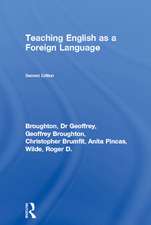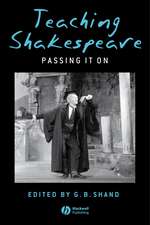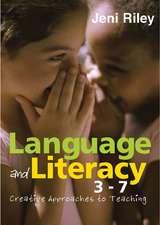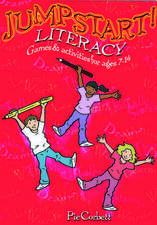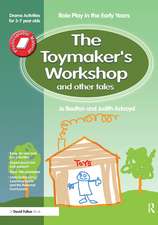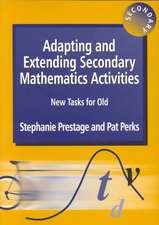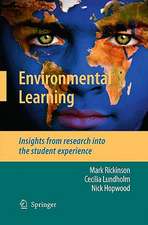Creative Model Construction in Scientists and Students: The Role of Imagery, Analogy, and Mental Simulation
Autor John Clementen Limba Engleză Hardback – 25 iun 2008
| Toate formatele și edițiile | Preț | Express |
|---|---|---|
| Paperback (1) | 960.30 lei 6-8 săpt. | |
| SPRINGER NETHERLANDS – 5 aug 2009 | 960.30 lei 6-8 săpt. | |
| Hardback (1) | 965.20 lei 6-8 săpt. | |
| SPRINGER NETHERLANDS – 25 iun 2008 | 965.20 lei 6-8 săpt. |
Preț: 965.20 lei
Preț vechi: 1177.08 lei
-18% Nou
Puncte Express: 1448
Preț estimativ în valută:
184.70€ • 197.50$ • 153.99£
184.70€ • 197.50$ • 153.99£
Carte tipărită la comandă
Livrare economică 18 aprilie-02 mai
Preluare comenzi: 021 569.72.76
Specificații
ISBN-13: 9781402067112
ISBN-10: 1402067119
Pagini: 632
Ilustrații: XXVIII, 602 p.
Dimensiuni: 155 x 235 x 39 mm
Greutate: 1.01 kg
Ediția:1st ed. 2008. Corrr. 2nd printing 2008
Editura: SPRINGER NETHERLANDS
Colecția Springer
Locul publicării:Dordrecht, Netherlands
ISBN-10: 1402067119
Pagini: 632
Ilustrații: XXVIII, 602 p.
Dimensiuni: 155 x 235 x 39 mm
Greutate: 1.01 kg
Ediția:1st ed. 2008. Corrr. 2nd printing 2008
Editura: SPRINGER NETHERLANDS
Colecția Springer
Locul publicării:Dordrecht, Netherlands
Public țintă
ResearchCuprins
Introduction: A “Hidden World” of Nonformal Expert Reasoning.- Analogies, Models, and Creative Learning in Experts and Students.- Major Processes Involved in Spontaneous Analogical Reasoning.- Methods Experts Use to Generate Analogies.- Methods Experts Use to Evaluate an Analogy Relation.- Expert Methods for Developing an Understanding of the Analogous Case and Applying Findings.- Case Study of Model Construction and Criticism in Expert Reasoning*.- Creativity and Scientific Insight in the Case Study for S2.- Spontaneous Analogies Generated by Students Solving Science Problems.- Case Study of a Student Who Counters and Improves His Own Misconception by Generating a Chain of Analogies.- Using Analogies and Models in Instruction to Deal with Students' Preconceptions*.- Advanced Uses of Imagery and Investigation Methods in Science and Mathematics.- Analogy, Extreme Cases, and Spatial Transformations in Mathematical Problem Solving by Experts.- Depictive Gestures and Other Case Study Evidence for Use of Imagery by Experts and Students.- Physical Intuition, Imagistic Simulation, and Implicit Knowledge.- The Use of Analogies, Imagery, and Thought Experiments in Both Qualitative and Mathematical Model Construction.- Thought Experiments and Imagistic Simulation in Plausible Reasoning.- A Punctuated Evolution Model of Investigation and Model Construction Processes.- Imagistic Processes in Analogical Reasoning: Transformations and Dual Simulations.- How Grounding in Runnable Schemas Contributes to Producing Flexible Scientific Models in Experts and Students.- Summary of Findings on Plausible Reasoning and Learning in Experts I: Basic Findings.- Summary of Findings on Plausible Reasoning and Learning in Experts II: Advanced Topics.- Creativity in Experts, Nonformal Reasoning,and Educational Applications.
Textul de pe ultima copertă
How do scientists use analogies and other processes to break away from old theories and generate new ones? This book documents such methods through the analysis of video tapes of scientifically trained experts thinking aloud while working on unfamiliar problems. Some aspects of creative scientific thinking are difficult to explain, such as the power of analogies, the use of physical intuition, and the enigmatic ability to learn from thought experiments. The book examines the hypothesis that these processes are based on imagistic mental simulation as an underlying mechanism. This allows the analysis of insight ("Aha!") episodes of creative theory formation. Advanced processes examined include specialized conserving transformations, Gedanken experiments, and adjusted levels of divergence in thinking. Student interviews are used to show that students have natural abilities for many of the basic reasoning and model construction processes and that this has important implications for expanding instructional theories of conceptual change and inquiry.
"I regard this work as the most comprehensive account ever attempted to show how imagistic, analogic, and sensory-motor representations participate in creative thinking."
Professor Ryan Tweney, Bowling Green State University, Ohio, USA
"I regard this work as the most comprehensive account ever attempted to show how imagistic, analogic, and sensory-motor representations participate in creative thinking."
Professor Ryan Tweney, Bowling Green State University, Ohio, USA
Caracteristici
Investigates the "hidden world" of expert creative reasoning in science Unpacks the role of imagery, analogy, and insight in "live" scientific thinking as it occurs Analyzes the largely uncharted domain of thought experiments based on mental simulation Examines similarities between creative thinking in students and experts Includes supplementary material: sn.pub/extras

